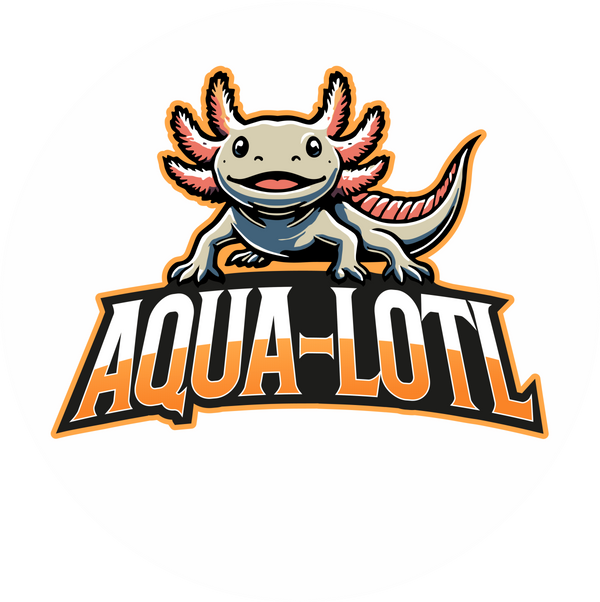How to Cycle an Axolotl Tank: The Nitrogen Cycle Explained Simply
Share
If you're setting up a new tank for your axolotl, there’s one thing you absolutely must understand first: the nitrogen cycle.
It’s not optional — it’s the difference between a thriving axolotl and one that gets sick or dies within weeks.

In this post, we’ll explain the nitrogen cycle in plain English, how to cycle your axolotl tank, and how to know when it’s finally safe to add your new aquatic friend.
🧪 What Is the Nitrogen Cycle?
The nitrogen cycle is the natural process that turns harmful waste (like poop and uneaten food) into safer compounds. Without this process, your tank water can become toxic — even if it looks crystal clear.
⚠️ Step 1: Waste Creates Ammonia
When your axolotl produces waste or food begins to rot, it creates ammonia (NH₃) in the water.
Ammonia is extremely toxic — even low levels can cause serious stress or death.
You can’t see ammonia, which is why you need to test for it regularly.
Never add an axolotl to a brand-new tank that hasn’t been cycled.
🔬 Step 2: Beneficial Bacteria Get to Work
Over time, two types of helpful bacteria grow in your filter and tank surfaces:
Nitrosomonas: Turns ammonia into nitrite (NO₂⁻) — still toxic
Nitrospira: Turns nitrite into nitrate (NO₃⁻) — much safer in small amounts
These bacteria form the foundation of a healthy, stable axolotl tank.
💧 Step 3: You Manage the Nitrate
Once your tank is cycled, nitrates begin to build up over time.
While less dangerous, nitrates must still be managed. Here’s how:
Perform weekly 25–50% water changes to keep nitrates under 40 ppm
Use live plants (like Anubias or Java Fern) to naturally absorb nitrates
Always treat new water with a water conditioner like Seachem Prime
✅ How to Know If Your Axolotl Tank Is Fully Cycled
Use a liquid test kit (like the API Freshwater Master Kit) to track your cycle.
You’ll know the tank is cycled when:
Ammonia = 0 ppm
Nitrite = 0 ppm
Nitrate = 10–40 ppm and rising slowly
If your tank can convert 3 ppm ammonia to nitrate in 24 hours, it's ready for your axolotl.
🕒 How Long Does It Take to Cycle?
With the fishless cycling method, it usually takes 3 to 6 weeks:
-
Add pure bottled ammonia to reach ~3 ppm
-
Wait for bacteria to appear naturally
-
Track your water daily using test kits
-
Cycle is complete when ammonia and nitrite stay at 0 ppm and nitrate starts rising
❌ Why You Should Never Skip Cycling
Adding an axolotl to an uncycled tank is one of the most common and dangerous mistakes.
Signs of ammonia/nitrite poisoning include:
Curled gills
Floating or gasping
Lethargy
Loss of appetite
Sudden death
Take the time to cycle — your axolotl’s life depends on it.
⚡ Bonus Tips to Speed Up the Cycle
Add filter media from a cycled tank
Use bottled bacteria like FritzZyme 7 or Seachem Stability
Keep the tank temp around 68°F (to encourage faster bacterial growth)
🐾 Final Thoughts
The nitrogen cycle is the foundation of your axolotl’s home.
By starting with a properly cycled tank, you’re giving your axolotl the safe, stable environment it needs to thrive.
Need more help getting started?
Check out our full [Axolotl Care Guide] or [Contact Us] — we’re here to help new axolotl owners succeed.
